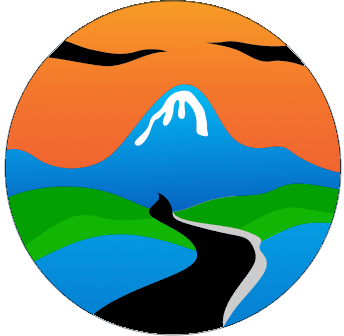Northwest Angle to the Headwaters of the Mississippi
I woke around 5 a.m. because the light coming through the fan vent was so intense. I opened the van side door and had a spectacular view of the sun over the lake, mist dancing on the water, and spectacular rays of light coming through the clouds.
Shortly after leaving the campground, I stopped at the post office to check on mail delivery times. Linda, working behind the counter, explained that it could take anywhere from a few hours to a few days for mail to reach Warland—and beyond that, she couldn’t say. She even walked outside with me to retrieve the letter I had dropped in the box yesterday, assuring me it would be picked up before noon.
We ended up talking about delivery schedules, the post office’s new location, and how packages get handled. Another woman comes by to pick up the mail and ferry it to other island postal offices. They no longer accept UPS packages due to security concerns. Inside the small, single-room building, I counted around 50 boxes stacked wherever they could fit. Linda told me that just yesterday it had been so full she could barely move around. It was a glimpse into the realities of how small, rural postal services keep things moving—one box, one letter, and one neighborly conversation at a time.
I had to stop at Jim’s Corner—a lonely intersection with nothing but a glass booth for U.S. Border Control and a phone mounted outside for Canadian Border Control. I picked up the receiver to let them know I’d be passing through Canada for just 40 minutes. They took my name, address, birthdate, vehicle make, license plate, and passport number, then cheerfully wished me a good trip.
Re-entering the U.S. was just as easy. The border agent asked the usual questions, then peeked inside the van to make sure I wasn’t smuggling people, plants, or anything else. She smiled, complimented the van, and we ended up talking about camper builds for five minutes before she waved me on with a “You’re good to go. Welcome home.”
I was headed for Itasca State Park, about four hours away—but with border stops, gas, and a grocery run, it turned into a five-hour trip. Along the way, I pulled over for photos of sunflowers, wheat fields, sagging old buildings, and winding waterways. It was one of those drives where you keep finding excuses to stop.
Leaving the Northwest Angle behind felt like shifting from one geography lesson to another. Up north, I’d been in a quirky slice of Minnesota that juts into Canada thanks to 18th-century treaty negotiations. Now, I was bound for the place early mapmakers once thought was hundreds of miles farther north—the headwaters of the Mississippi River.
The drive to Itasca State Park was a scenic one, with endless fields of sunflowers, along with stretches of corn, soybeans, and wheat. In several spots, clusters of beehives sat close to the road, their white boxes bright against the green. Off in the distance, I spotted an old, dilapidated house set near the roadside. I had to pull over for photos. It wasn’t easy to get close—the roadside ditches and thick growth around the building kept it at arm’s length—but it still drew me in. I found myself wondering who had lived there and what stories its walls might hold. Judging by its weathered frame, it could easily date back to the early 1900s, when the road here would have been nothing more than a dirt track.
Itasca State Park
After checking into the park, I set out on the 20-mile bike loop, a route that makes a complete circuit around Itasca State Park and shows off its variety of landscapes. The trail is a blend of smooth, shaded pavement and one-way park roads with wide bike lanes, making it both safe and comfortable for riders. In some stretches, the path winds through stands of towering red and white pines, their needles softening the sound of your tires as sunlight filters through in shifting patterns. In others, it opens to the edges of clear, shimmering lakes, where the water catches the sky and loons call from the distance.
The ride takes you past marshy lowlands where cattails sway and dragonflies dart, then through rolling stretches of hardwood forest glowing with deep greens in summer. One newer section of the trail offers a long, steady uphill climb—enough to work your legs and lungs, but not so steep as to break your rhythm. The reward comes in the form of gentle descents where you can coast and take in the scent of pine and fresh earth. By the time you complete the loop, you’ve traveled through nearly every type of terrain the park holds—each section its own quiet reminder of why Itasca has been protected for well over a century.
Back at the park center, I walked to the river’s official starting point, where water trickle out of Lake Itasca and begins a 2,300-mile journey to the Gulf. No roaring falls, no dramatic cliff—just a quiet, steady flow that has been making this trip for thousands of years.
















